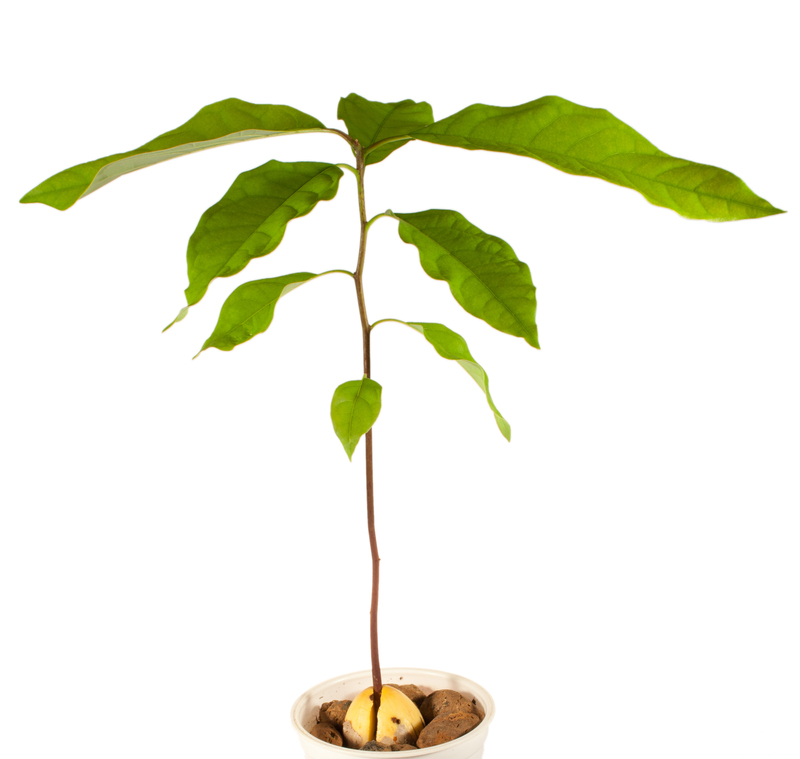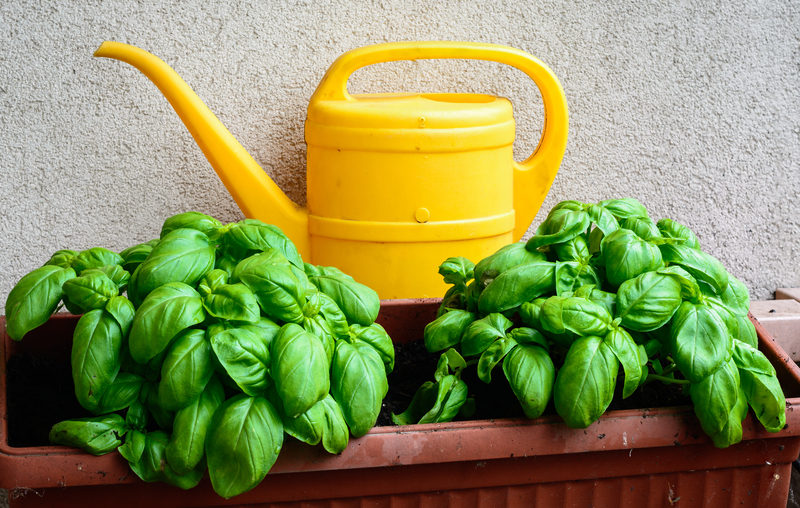Preparing Your Garden Plants for Harsh Winter Conditions
Posted on 23/09/2025
Preparing Your Garden Plants for Harsh Winter Conditions
Winter can be a challenging time for gardens and the dedicated gardeners who tend to them. With chilling winds, freezing temperatures, and unpredictable weather, it's crucial to ensure your garden plants are ready to withstand harsh winter conditions. Whether you're a seasoned green thumb or a novice cultivator, this comprehensive guide will provide you with all the steps and tips you need for preparing your garden for winter and keeping your beloved plants safe, healthy, and ready to bloom come spring.
Understanding the Impact of Winter on Garden Plants
The effects of cold weather can differ depending on your region, plant types, and microclimate. Common problems include:
- Frost damage causing blackened or wilted leaves
- Root desiccation from frozen soil
- Broken branches due to snow and ice loads
- Dehydration as water becomes less available
- Dieback of tender perennials and annuals
The key to protecting your plants during cold months lies in understanding these threats and proactively working to reduce their effects.

When to Start Preparing Your Garden for Winter
Timing is essential when preparing your garden plants for harsh winter conditions. Experts recommend beginning preparations in late autumn--before the first hard frost arrives. Here are important time guidelines:
- Early Fall (September-October):
- Plan your garden clean-up
- Inspect all plants for disease or pest infestations
- Late Fall (October-November):
- Mulch vulnerable areas
- Move sensitive container plants indoors
- Wrap trees and shrubs if needed
Monitor your local weather forecasts and prepare a few weeks before freezing temperatures are expected to ensure you are not caught off-guard by an early cold snap.
Assessing Your Garden: What Needs Protection?
Before you begin, take a thorough walk around your garden and look for the following:
- Delicate perennials and annuals
- Newly planted shrubs or trees
- Container or potted plants
- Plants in windy or exposed areas
- Frost-tender bulbs and tubers
Note: Some plants, like mature native species, may require less intervention, while non-hardy or exotic species will be most vulnerable to harsh winter weather.
Garden Clean-up: The First Step in Winterizing
Cleanliness is vital for plant health, as fallen leaves and debris can harbor pests and diseases over winter. To minimize risks:
- Rake away all dead leaves, stems, and branches
- Dispose of diseased plant material (do not compost)
- Prune dead or damaged branches from shrubs and trees
- Cut back perennials to a few inches above ground
Tip: Consider leaving some seed heads or stems intact for birds and beneficial insects to shelter and feed on during the colder months.
Mulching: The Key to Insulating Roots
One of the most effective ways to prepare your garden for winter is by applying mulch. Mulch serves as a protective blanket for plant roots, helps maintain soil temperature, and retains moisture.
Best Mulch Materials for Winter Protection
- Shredded bark or wood chips
- Pine needles
- Compost
- Straw (free of weed seeds)
- Chopped leaves
How to Apply Mulch Correctly:
- Add a 2-4 inch layer around the base of your plants, keeping mulch a few inches away from stems and trunks
- For perennials, mound mulch over the crowns after the ground has frozen
- Renew or refresh mulch later in winter if needed due to wind or erosion
Protecting Shrubs and Small Trees
Winter preparation is vital for woody plants. Apart from mulching, certain shrubs and trees benefit from additional protection:
- Wrap trunks of young trees (like maples or fruit trees) with tree wrap or burlap to guard against sunscald and rodent damage
- Stake tall, floppy shrubs to prevent wind breakage
- Install windbreaks using burlap screens for exposed or coastal locations
- Prune judiciously--but avoid heavy pruning right before winter, as this can stimulate new growth that is vulnerable to cold
Tip: Use twine to gently tie together central branches of columnar evergreens (like arborvitae) to prevent snow from splaying them open.
Watering: Don't Let Your Garden Go Thirsty
Many gardeners make the mistake of stopping watering too soon. In reality, plants need adequate moisture heading into winter:
- Water deeply during dry fall periods for trees, shrubs, and perennials
- Focus on evergreens, which lose water through leaves year-round and are prone to winter burn
- Stop watering annuals after the first frost--they are already at the end of their growing season
Good soil moisture reduces the risk of desiccation and frost-heaving, helping your plants survive the cold months ahead.
Special Considerations for Perennials
Cutting Back and Dividing
- Cut back most perennials to minimize pest and disease problems, unless their foliage offers winter interest or wildlife habitat
- Divide overcrowded clumps of daylilies, hostas, or iris in early fall--this gives roots time to establish before winter
How to Protect Tender Perennials
Some perennials, such as dahlias or cannas, are not cold hardy. Here's how to give them the best chance of surviving:
- Dig up tender bulbs or tubers after the first frost and store them in a cool, dry place indoors
- Apply extra mulch (5-6 inches) over crowns of marginally hardy perennials
- For borderline plants, try using a cloche or plant cover for extra insulation
Looking After Garden Beds and Soil Over Winter
Don't neglect the health of your garden beds in your winter plant preparation routine. Cold temperatures and repeated freezing can affect soil structure and nutrient levels. For best results, consider:
- Top-dressing with compost or well-rotted manure to increase fertility and encourage beneficial soil microbes
- Planting cover crops (like winter rye or clover) to prevent soil erosion and fix nutrients
- Avoiding soil compaction by staying off wet beds during freeze and thaw cycles
Winter Care for Container and Indoor Plants
Moving Pots Indoors
Many container plants are more exposed to freezing conditions since their roots have less soil insulation. Give them some TLC:
- Bring containers of tropical or tender perennials indoors before first frost
- Store dormant plants in a cool, dark basement or garage
- Group pots together for mutual warmth and protection
Insulating Outdoor Containers
- Wrap pots in bubble wrap, burlap, or horticultural fleece
- Elevate pots off the ground to avoid waterlogging and freeze-thaw damage
- Use frost-proof containers made of thick ceramic, stone, or plastic
If you must leave pots outside, cluster them against a south-facing wall for extra warmth.
Protecting Lawns and Groundcovers
Turfgrass and winter groundcovers are often overlooked in winter garden preparation efforts. To keep them healthy:
- Rake up late-falling leaves to prevent smothering grass or groundcovers
- Give your lawn a final, slightly lower mow before winter sets in (but don't scalp)
- Fertilize with a slow-release, winter-appropriate formula
- Reduce traffic on frozen or wet lawns to avoid compaction
Frost and Freeze Protection Gear
When extreme cold or late fall frosts threaten, season extenders and protective covers can buy your plants extra time:
- Floating row covers or garden fleece
- Burlap wraps and windbreaks for shrubs
- Plastic domes, cloches, or cold frames for vulnerable perennials and seedlings
- Straw or leaf mulch for vegetable and herb beds
Always remove plastic coverings during the day to avoid overheating and excess moisture.
Monitoring and Maintenance Through Winter
Even after your initial preparations, a little extra attention during the winter months can make a huge difference in your garden's health come spring:
- Check for broken branches after snow or ice storms; prune carefully if needed
- Brush off heavy snow loads from shrubs and evergreens to reduce bending and breakage
- Water evergreens during dry warm spells if soil is not frozen
- Replenish mulch as it settles or is displaced
What Not to Do: Common Winter Garden Preparation Mistakes
- Don't apply heavy fertilizer in late fall--it can stimulate new growth that is easily damaged by frost
- Don't wrap trees with plastic, as it can trap moisture and lead to disease
- Don't prune spring-flowering shrubs in fall--you'll be cutting off your blooms
- Don't compost diseased or infested plant materials
Eco-Friendly Tips for Winter Protection
Gardening with environmental stewardship in mind is always in style. Here are some green tips for preparing plants for severe winter weather:
- Reuse leaves and garden debris as mulch for beds
- Use natural burlap instead of synthetic wraps
- Select native or winter-hardy plant species that require minimal protection

Frequently Asked Questions: Winter Garden Preparation
Should I cover my roses for the winter?
Yes, especially in colder climates. Mound soil or mulch around the base and use a rose cone or burlap wrap for extra insulation--but remove in early spring to prevent rot.
Is it necessary to remove mulch in the spring?
Yes, gradually. Remove thick mulch layers as temperatures warm to allow soil to thaw and prevent crown rot in perennials.
How do I know if my plants made it through winter?
Check for signs of regrowth after the last frost. Gently scratch tree or shrub bark with your fingernail; green underneath means the plant is alive. Be patient, as some plants take longer to break dormancy.
Conclusion: Giving Your Garden the Best Chance This Winter
Preparing your garden plants for harsh winter conditions is a rewarding investment in your landscape's future. With careful planning, timely action, and the tips outlined in this guide, you can safeguard your perennials, shrubs, trees, and even your lawn against nature's toughest season. Remember--every step you take now means a healthier, more vibrant garden when spring finally arrives.
Stay attentive to your garden's unique needs each year, and you'll enjoy beautiful, resilient plants no matter what winter throws your way. Happy gardening!



